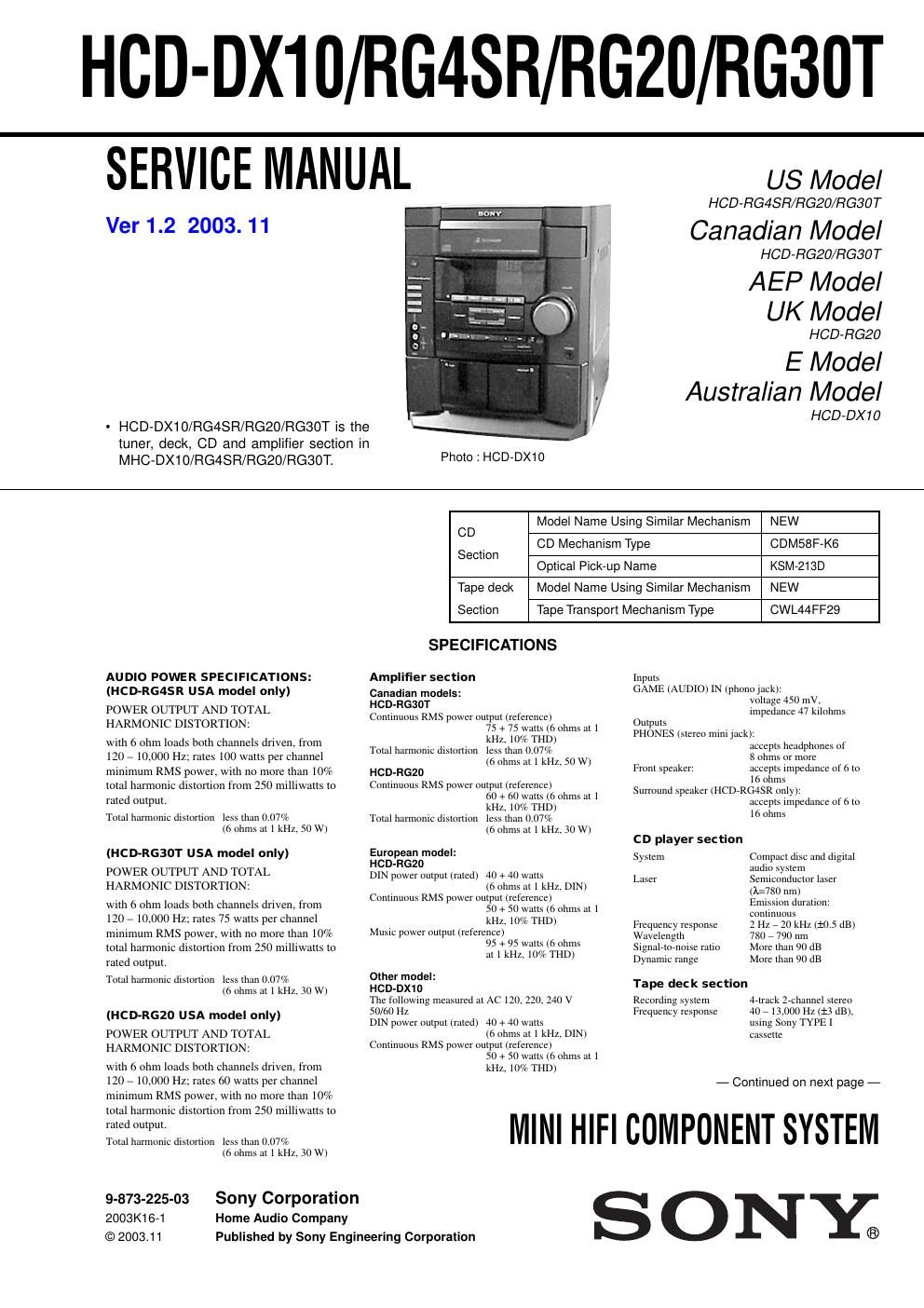Sony hcd rg 4 sr service manual
This is the 54 pages manual for sony hcd rg 4 sr service manual.
Read or download the pdf for free. If you want to contribute, please upload pdfs to audioservicemanuals.wetransfer.com.
Page: 1 / 54
